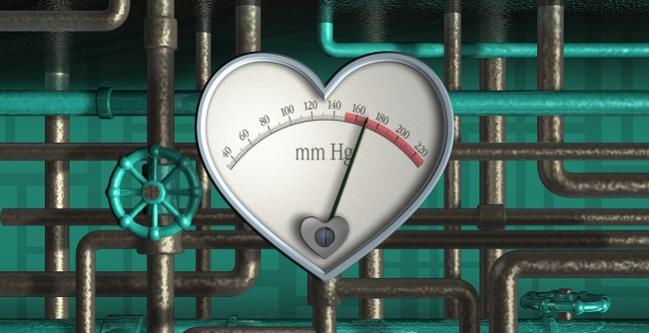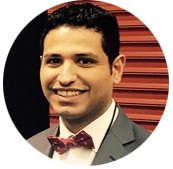Hemodynamics: The Forgotten Branch of Cardiology
Given advancements in the field, is it time for fellows to spend more time learning how to do advanced hemodynamics?

The most tremendous advancements in the field of cardiovascular medicine over the past two decades, I’d argue, have been in the areas of structural heart disease and imaging.
In the 1960s and 1970s, invasive measurements were essential in understanding the physiology and pathophysiology of patients with cardiovascular disease. The use of 2-D echocardiography and doppler echocardiography emerged in the 1980s and provided alternative noninvasive methods of studying such patients. At the same time, the focus within cardiac catheterization laboratories went from primary hemodynamics assessment that lays out a road map for surgery to the diagnosis and treatment of epicardial coronary artery disease. Consequently, many of those who worked in cath labs possessed neither the training nor the expertise to assess hemodynamics accurately.
At last year’s TCT meeting, I attended an afternoon session on hemodynamics where I observed several presentations of cases such as constrictive pericarditis, hypertrophic cardiomyopathy, shunt with atrial septal defects, and other problems. The session moderator made a comment about how we are still talking about the correct method of performing such studies despite the fact we did them 40 years ago—and perhaps even did them better then. That, to me, was a relief: knowing that I was not alone in this concern.
Are Fellows Missing Out?
From my conversations with peers, it seems increasing number of cardiology fellows are having consistently less exposure to hemodynamic assessment in the cath lab, a shift driven mainly by the reliance on noninvasive approaches in assessing such patients. Although there are advantages of noninvasive imaging in these instances, invasive hemodynamics remain the gold standard in the majority of flow/pressure pathophysiologies. It’s troubling that patients are often leaving the cath lab today without diagnoses despite the ability of hemodynamics to come to a conclusion if performed meticulously and carefully.
On the other hand, today’s cath lab has become the place to solve problematic diagnostic dilemmas that arise when answers are not apparent through clinical examination and noninvasive testing. Thus, hemodynamics studies can be challenging if relatively inexperienced invasive cardiologists do only difficult hemodynamics cases.
While there are advanced fellowships in interventional, structural, imaging, congenital, heart failure, electrophysiology, and so on, it’s rare to see any advanced fellowships in cardiac hemodynamics. Such a program would be of great value, even more so with the ongoing development in structural interventions and mechanical circulatory support devices. This could be a stand-alone fellowship or done in conjunction with structural, interventional, or heart failure programs.
Training programs in general cardiology today focus less on hemodynamics compared with other branches of cardiology, and I was fortunate to realize this early in my training. To amend this imbalance, I bought and read textbooks on hemodynamics and attended sessions on the topic at conferences. I also made sure to be involved with as many hemodynamics cases in the cath lab as possible following discussions with my attending cardiologists.
Who Is the Hemodynamics ‘Guru’?
During my cardiology training, I have always wondered exactly which cardiologist should be the hemodynamic specialist. Is it the imaging cardiologist with the understanding of the similar data obtained from noninvasive? Or is it the interventional cardiologist who spends more time in cath lab doing procedures that sometimes rely on hemodynamic data? Perhaps it is the heart failure specialist with the expertise in challenging hemodynamics cases in the failing heart. Who knows?
I’m sure at one point or another, all of these people can be the hemodynamics “guru,” which may well be the solution to this issue. You could argue that one specialist should be the expert on hemodynamics just like we have an expert on imaging, intervention, et cetera. On the other hand, it might be possible to divide hemodynamics among subspecialties with expertise shared among cardiologists.
In my opinion, it remains a challenge to ensure all cardiac centers have this expert or experts who can train new fellows and provide guidance and share knowledge in the field.
There Is Hope in Training
In the future, I’d like to see one of two possible scenarios happen: either all cardiologists will be trained at a high level in hemodynamics given the advancements in cardiovascular medicine and expansion of imaging and therapeutics, or one of the subspecialties in cardiology, such interventional cardiology, will take ownership of this most-exciting field and revive it again.
In the meantime, I would advise other fellows to keep reading about hemodynamics and teach their knowledge to others. In my experience, the most useful book available on this topic is Hemodynamics Rounds, also known as the “red book” by Morton Kern and colleagues. The Cardiovascular Research Foundation has detected this gap in education and has launched TEACH: Training and Education in Advanced Cardiovascular Hemodynamics, a half-day course which aims to provide an in-depth hemodynamics curriculum created by expert faculty (Disclosure: CRF is the publisher of TCTMD). The Society for Cardiovascular Angiography and Interventions has also published a consensus document regarding hemodynamics in cardiovascular disease, emphasizing the fundamental role of invasive hemodynamics in understanding the pathophysiology of the heart and its clinical utility.
Finally, it is important to remember that modern insights into cardiovascular disease first emerged through invasive hemodynamics. Although we have noninvasive methods which are routinely used, the invasive catheter-based assessments performed in the cath lab remain the gold standard for hemodynamics evaluations in most cardiovascular patients. We, as fellows, should learn it, practice it, and teach it.
2018-2019 Fellow Talk Blogger
Mesfer is a second-year general cardiology fellow at Dunedin Hospital (Otago, New Zealand), where he also…
Read Full Bio

Husam Noor
Frank Amico